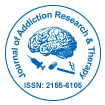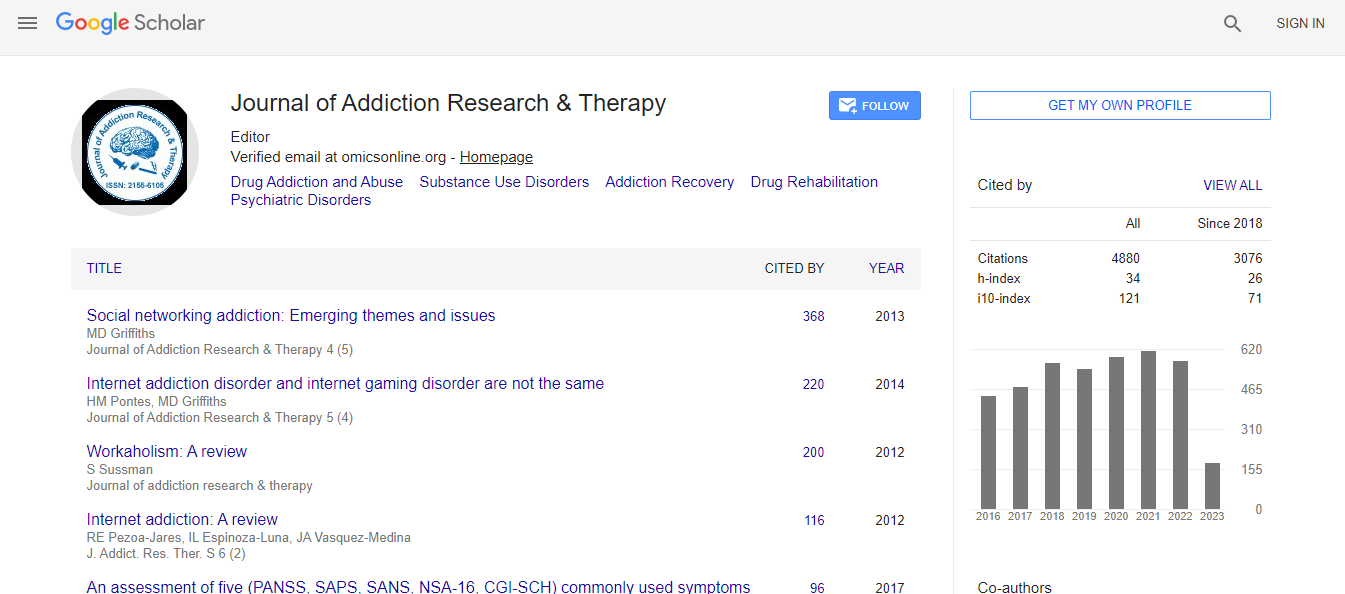Review Article
Insights for Developing Pharmacological Treatments for Psychostimulant Relapse Targeting Hypothalamic Peptide System
Morgan H. James, Jiann W. Yeoh, Brett A. Graham and Christopher V. Dayas*Neurobiology of Addiction Laboratory, School of Biomedical Sciences and Pharmacy and the Centre for Translational Neuroscience and Mental Health Research, University of Newcastle and the Hunter Medical Research Institute, Newcastle, NSW 2038, Australia
- *Corresponding Author:
- Christopher V. Dayas
School of Biomedical Sciences & Pharmacy
University of Newcastle and the Hunter Medical Research Institute
Newcastle, NSW 2308, Australia
Email: Christopher.Dayas@newcastle.edu.au
Received December 28, 2012; Accepted February 17, 2012; Published February 21, 2012
Citation: James MH, Yeoh JW, Graham BA, Dayas CV (2012) Insights for Developing Pharmacological Treatments for Psychostimulant Relapse Targeting Hypothalamic Peptide Systems. J Addict Res Ther S4:008. doi: 10.4172/2155-6105.S4-008
Copyright: © 2012 James MH, et al. This is an open-access article distributed under the terms of the Creative Commons Attribution License, which permits unrestricted use, distribution, and reproduction in any medium, provided the original author and source are credited.
Abstract
Effective pharmacotherapeutic treatment options for psychostimulant addiction are lacking, in part due to an incomplete understanding of the complex neural circuitry involved in renewed drug-seeking and relapse. The lateral hypothalamus (LH) has received renewed interest with respect to its role in addiction-related behaviours, prompted largely by the identification of a number of hypothalamic neuropeptides shown to be important mediators of reward-seeking. In particular, orexin (hypocretin) and cocaine- and amphetamine-regulated transcript (CART) have been shown to play largely opposing roles in feeding behaviour and these roles have recently been shown to extend to drug-seeking behaviour. We have previously proposed that these two peptide systems may interact with the ‘classical’ reward circuitry via the paraventricular thalamus (PVT), as this region is densely innervated by both orexin and CART –positive fibres and projects to a number of regions critical to drug-seeking [1]. The present review provides a comprehensive overview of the current literature implicating both orexin and CART in drug-seeking and relapse behaviour and presents a revised summary of the role of the PVT in mediating the actions of these two peptides. In addition, we provide novel data demonstrating that blockade of orexin receptor 1 (OXR1) signaling within the ventral tegmental area (VTA) alters Fos-protein expression in relapse-relevant regions, including the PVT and the nucleus accumbens shell (NacS). Further, whilst previous findings have shown that blockade of OXR1 in the VTA prevents reinstatement of cocaineseeking, we show here that this treatment does not affect natural reward seeking for sweetened condensed milk. In light of the reviewed body of literature, as well as the novel data presented, we discuss the considerations for future pharmacotherapies targeting the orexin and CART systems for relapse prevention.

 Spanish
Spanish  Chinese
Chinese  Russian
Russian  German
German  French
French  Japanese
Japanese  Portuguese
Portuguese  Hindi
Hindi 
